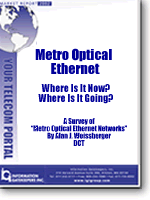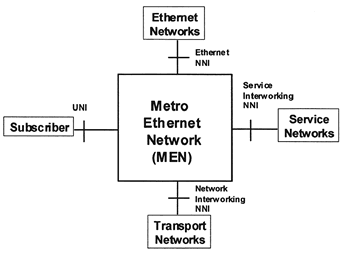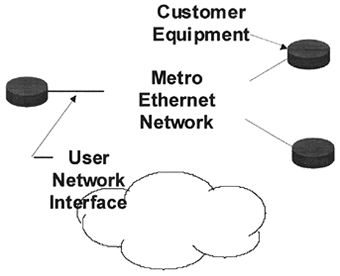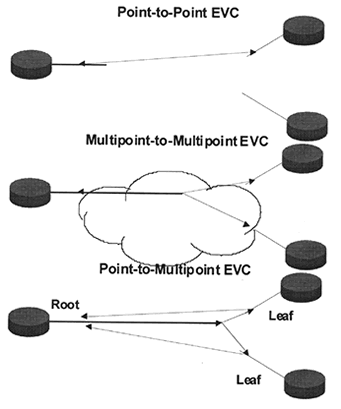|
|

 |
|
Overview:
Leveraging off its success in LAN, there is a global movement to deploy Ethernet technology in the MAN and WAN. Once thought of as only a local area network transport medium, Ethernet is now finding applications int he access, metro and wide area networks
The market potential is so promising, that the standards organizations (IEEE 802.3ah, ITU-T and various forums such as the Metro Ethernet Forum [MEF]) are working feverishly to complete their respective specifications. Trying to keep up with all the standards activities and separating the "wheat from the chaff" has become a daunting task.
Dr. Alan Weissberger, a seasoned veteran of telecom/datacom technologies, and an active participant in the standard development process has writte a hard hitting insiders' surrvey of the past years activity in the development of the "Metro Optical Ethernet Networks." The survey is concisely written with the author's personal views on what can be expected, the role of the various players and the overall impact on market growth.
Standards Models Described In This Report:
The present models being used to identify the various interfaces are shown in the following, depicting between equipment and the MEN, as well as various Network to Network Interfaces (NNIs). All of these interfaces are being specified by the MEF. The NNI to Transport Networks is part of the ITU work on g-etna.


The possible Ethernet virtual connection types being considered are shown in the following figure.
Ethernet Virtual Connection Types

Summary of Parts:
- Deployment Scenarios and Services to be Offered in the Metro Network
- Who’s in Charge in Carrier Land and What Will They Buy?
- Ethernet Over SONET/SDH Deployments
- Native Mode 1, N, and 10 GigE Transport -Motivations/Strengths and Weaknesses
- Our opinion of 10GigE
- L2 MPLS VPNs – the Dark Horse in the Race for Metro Ethernet Deployments
- IEEE 802.17 Resilient Packet Ring (RPR)
- Network Equipment Supporting Ethernet in the Metro Network
- Four key Functions Needed Within Metro Ethernet Boxes
- Closing Comments/Opinions
Appendix: Acknowledgement and Dedication
|
|
|